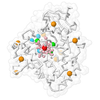Entry Database : PDB / ID : 4d7oTitle Structure of rat neuronal nitric oxide synthase heme domain in complex with 6-(4-(((3-Fluorophenethyl)amino)methyl)phenyl)-4- methylpyridin-2-amine NITRIC OXIDE SYNTHASE, BRAIN Keywords / / Function / homology Function Domain/homology Component
/ / / / / / / / / / / / / / / / / / / / / / / / / / / / / / / / / / / / / / / / / / / / / / / / / / / / / / / / / / / / / / / / / / / / / / / / / / / / / / / / / / / / / / / / / / / / / / / / / / / / / / / / / / / / / / / / / / / / / / / / / / / / / / / / / / / / / / / / / / / / / / / / / / / / / / / / / Biological species RATTUS NORVEGICUS (Norway rat)Method / / OTHER / Resolution : 1.78 Å Authors Li, H. / Poulos, T.L. Journal : Chem.Biol. / Year : 2015Title : Nitric Oxide Synthase as a Target for Methicillin-Resistant Staphylococcus AureusAuthors : Holden, J.K. / Kang, S. / Beasley, F.C. / Cinelli, M.A. / Li, H. / Roy, S.G. / Dejam, D. / Edinger, A.L. / Nizet, V. / Silverman, R.B. / Poulos, T.L. History Deposition Nov 25, 2014 Deposition site / Processing site Revision 1.0 Jul 1, 2015 Provider / Type Revision 1.1 May 8, 2024 Group Data collection / Database references ... Data collection / Database references / Derived calculations / Other Category chem_comp_atom / chem_comp_bond ... chem_comp_atom / chem_comp_bond / database_2 / pdbx_database_status / pdbx_struct_conn_angle / struct_conn / struct_site Item _database_2.pdbx_DOI / _database_2.pdbx_database_accession ... _database_2.pdbx_DOI / _database_2.pdbx_database_accession / _pdbx_database_status.status_code_sf / _pdbx_struct_conn_angle.ptnr1_auth_asym_id / _pdbx_struct_conn_angle.ptnr1_auth_comp_id / _pdbx_struct_conn_angle.ptnr1_auth_seq_id / _pdbx_struct_conn_angle.ptnr1_label_asym_id / _pdbx_struct_conn_angle.ptnr1_label_atom_id / _pdbx_struct_conn_angle.ptnr1_label_comp_id / _pdbx_struct_conn_angle.ptnr1_label_seq_id / _pdbx_struct_conn_angle.ptnr2_auth_asym_id / _pdbx_struct_conn_angle.ptnr2_auth_comp_id / _pdbx_struct_conn_angle.ptnr2_auth_seq_id / _pdbx_struct_conn_angle.ptnr2_label_asym_id / _pdbx_struct_conn_angle.ptnr2_label_atom_id / _pdbx_struct_conn_angle.ptnr2_label_comp_id / _pdbx_struct_conn_angle.ptnr3_auth_asym_id / _pdbx_struct_conn_angle.ptnr3_auth_comp_id / _pdbx_struct_conn_angle.ptnr3_auth_seq_id / _pdbx_struct_conn_angle.ptnr3_label_asym_id / _pdbx_struct_conn_angle.ptnr3_label_atom_id / _pdbx_struct_conn_angle.ptnr3_label_comp_id / _pdbx_struct_conn_angle.ptnr3_label_seq_id / _pdbx_struct_conn_angle.value / _struct_conn.pdbx_dist_value / _struct_conn.ptnr1_auth_asym_id / _struct_conn.ptnr1_auth_comp_id / _struct_conn.ptnr1_auth_seq_id / _struct_conn.ptnr1_label_asym_id / _struct_conn.ptnr1_label_atom_id / _struct_conn.ptnr1_label_comp_id / _struct_conn.ptnr1_label_seq_id / _struct_conn.ptnr2_auth_asym_id / _struct_conn.ptnr2_auth_comp_id / _struct_conn.ptnr2_auth_seq_id / _struct_conn.ptnr2_label_asym_id / _struct_conn.ptnr2_label_atom_id / _struct_conn.ptnr2_label_comp_id / _struct_conn.ptnr2_label_seq_id / _struct_site.pdbx_auth_asym_id / _struct_site.pdbx_auth_comp_id / _struct_site.pdbx_auth_seq_id
Show all Show less
 Yorodumi
Yorodumi Open data
Open data Basic information
Basic information Components
Components Keywords
Keywords Function and homology information
Function and homology information
 X-RAY DIFFRACTION /
X-RAY DIFFRACTION /  SYNCHROTRON / OTHER / Resolution: 1.78 Å
SYNCHROTRON / OTHER / Resolution: 1.78 Å  Authors
Authors Citation
Citation Journal: Chem.Biol. / Year: 2015
Journal: Chem.Biol. / Year: 2015 Structure visualization
Structure visualization Molmil
Molmil Jmol/JSmol
Jmol/JSmol Downloads & links
Downloads & links Download
Download 4d7o.cif.gz
4d7o.cif.gz PDBx/mmCIF format
PDBx/mmCIF format pdb4d7o.ent.gz
pdb4d7o.ent.gz PDB format
PDB format 4d7o.json.gz
4d7o.json.gz PDBx/mmJSON format
PDBx/mmJSON format Other downloads
Other downloads 4d7o_validation.pdf.gz
4d7o_validation.pdf.gz wwPDB validaton report
wwPDB validaton report 4d7o_full_validation.pdf.gz
4d7o_full_validation.pdf.gz 4d7o_validation.xml.gz
4d7o_validation.xml.gz 4d7o_validation.cif.gz
4d7o_validation.cif.gz https://data.pdbj.org/pub/pdb/validation_reports/d7/4d7o
https://data.pdbj.org/pub/pdb/validation_reports/d7/4d7o ftp://data.pdbj.org/pub/pdb/validation_reports/d7/4d7o
ftp://data.pdbj.org/pub/pdb/validation_reports/d7/4d7o Links
Links Assembly
Assembly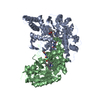
 Components
Components



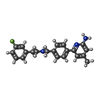
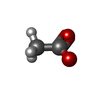







 X-RAY DIFFRACTION / Number of used crystals: 1
X-RAY DIFFRACTION / Number of used crystals: 1  Sample preparation
Sample preparation SYNCHROTRON / Site:
SYNCHROTRON / Site:  ALS
ALS  / Beamline: 8.2.1 / Wavelength: 0.999
/ Beamline: 8.2.1 / Wavelength: 0.999  Processing
Processing Movie
Movie Controller
Controller





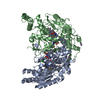
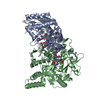

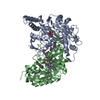
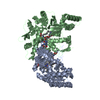
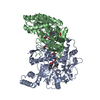
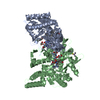
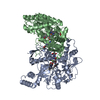

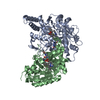
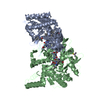
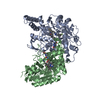
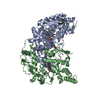
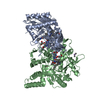
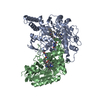
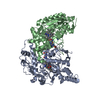
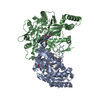
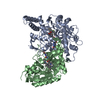
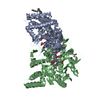
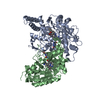
 PDBj
PDBj
